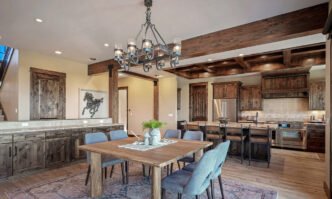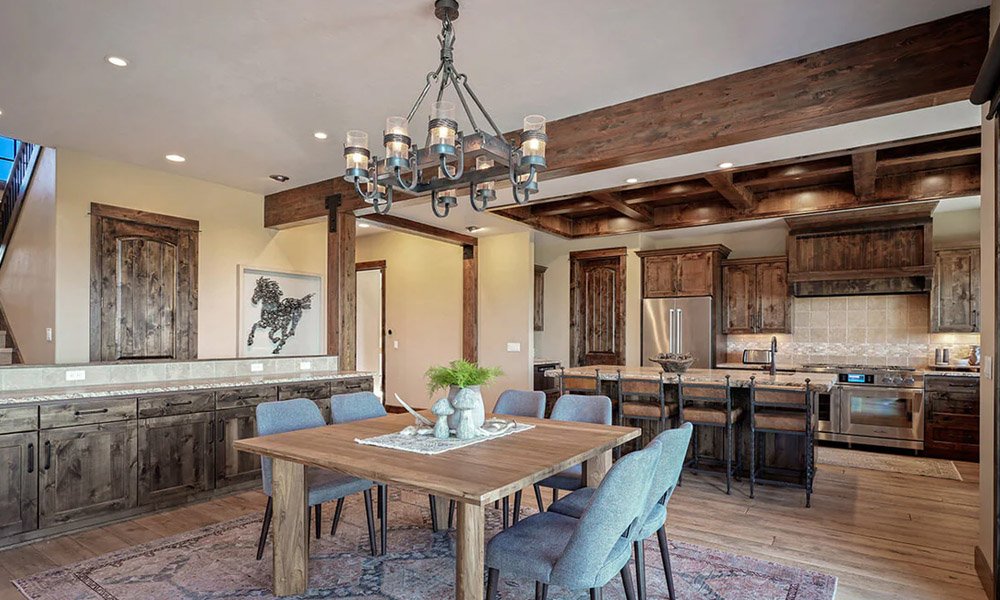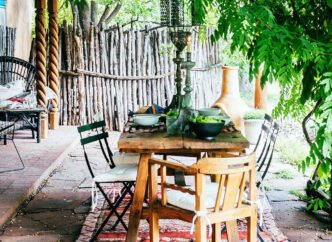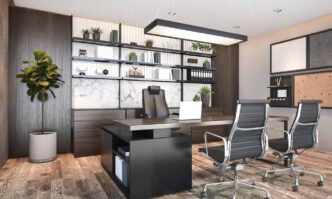Have you ever entered a well-decorated house that seemed odd despite meticulous furnishings and color schemes? The roof is generally to blame for this common occurrence. Many homeowners focus on furnishings and décor but ignore the roof, which connects everything together. In actuality, a roof’s style and color may greatly affect a home’s inside and exterior. Bringing your roof architecture and interior design together may make your room great.
The Influence of Roof Color on Interior Design
When thinking about home décor, many people focus on walls, furniture, and accessories. However, the roof color plays a vital role in shaping your home’s color palette. A roof serves as an anchor that can inform your entire design scheme. Darker roofing materials, such as deep grays or black, complement warmer, richer tones inside the home, creating a cozy and inviting atmosphere. Conversely, lighter-colored roofs can enhance cooler tones in the interior, making the space feel open and airy.
Choosing paint colors and interior elements becomes easier when you understand the undertones in your roof. For instance, a roof with hints of brown or reddish hues will naturally pair well with earth tones like deep browns, greens, and yellows inside your home. On the other hand, gray or black roofs provide a versatile foundation that can harmonize with both warm and cool interior palettes, offering greater flexibility when decorating.
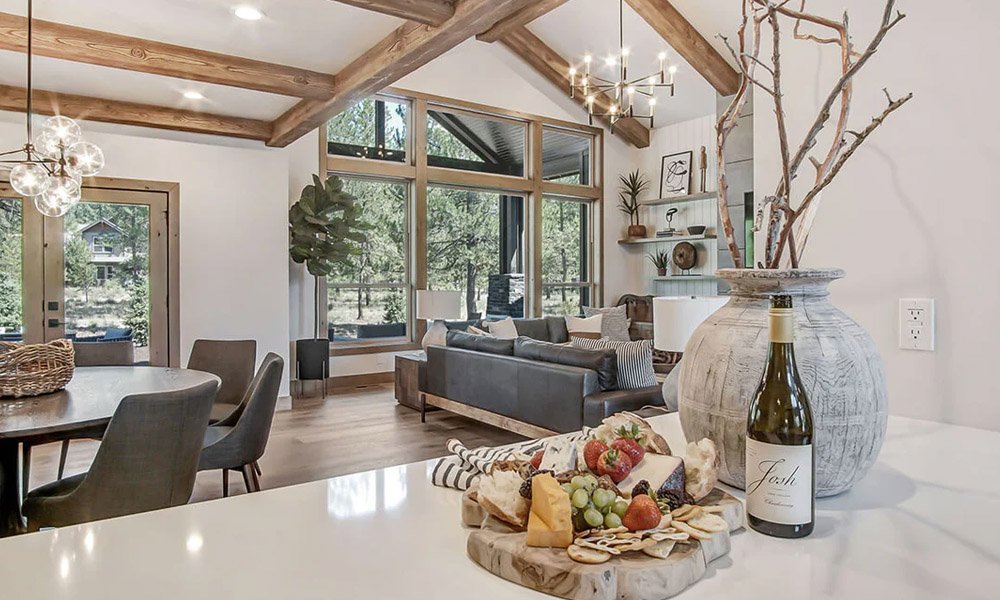
Aligning Roof Styles with Interior Design Themes
Roof style affects house architecture beyond color. Different roof designs have historical and aesthetic associations that might increase space harmony. Creating a harmonious house requires understanding how these types interact with interior décor.
Traditional triangular gable roofs with steep slopes blend with classic, colonial, and country-style interiors. These homes include symmetrical designs, vintage furnishings, and classic colors. Traditional components like a wooden dining table or old chairs may accentuate the architecture-interior relationship.
It matches minimalist, clean-lined interiors of modern flat roof dwellings. The flat roof’s simplicity encourages open floor designs and modern furnishings, creating a sleek look. Geometric proportions, minimal decoration, and neutral colors enhance the contemporary look of a flat roof.
Elegant slopes and symmetrical shape make hip roofs ideal for transitional or modern classic décor. These roofs balance classic and modern aspects, making them ideal for homes who want the warmth of traditional architecture with the sleekness of modern.
Bringing the Outside In: Integrating Roof Elements
One of the most effective ways to tie your roof style to your home’s interior is by introducing exterior materials inside. If you have a wooden roof, for example, using similar wood tones in your flooring, furniture, or accents will create a natural and seamless flow between the exterior and interior of your home. The use of natural materials like stone or brick, inspired by your roof’s texture, can also contribute to the overall visual cohesion.
Additionally, take note of the geometric patterns in your roof. A roof with sharp angles, such as a gable roof, can inspire similar sharp lines in your interior design through items like artwork, furniture, or even the layout of your rooms. For example, triangular or angular motifs in pillows, rugs, or lighting can reflect the geometry of the roof, strengthening the visual connection between the exterior and interior.
Don’t forget to consider how natural light from skylights, dormers, or roof windows affects your space. Skylights, for instance, can bring in soft, natural light that affects the overall ambiance and color choices inside. This light can help highlight specific features, such as a statement wall or piece of furniture, creating a dynamic interaction between your home’s roof and interior elements.
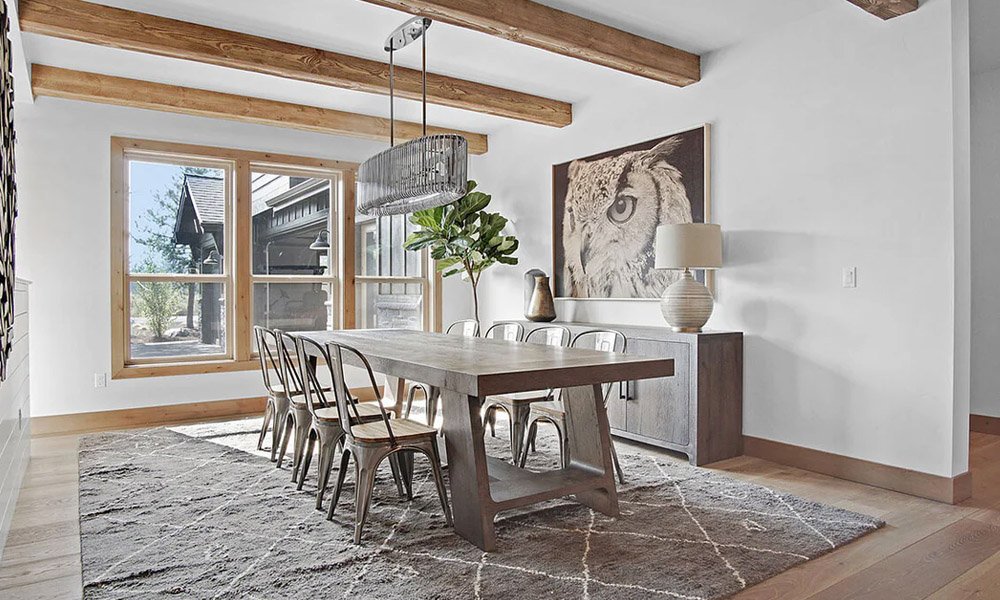
Seasonal Shifts and Roof-Interior Harmony
Connecting roof style to interior design permits seasonal modifications, which is great. Each season is an opportunity to update your home’s appeal while preserving the roof’s architecture. In summer, when you want to be outside, use natural materials like light wood and linen. A lighter-colored ceiling, for instance, might fit well with light linens and soft furniture that express freedom and leisure.
Take use of your roof’s protection to create pleasant, welcoming rooms in winter. Use velvety carpets, blankets, and drapes and warm, rich colors in your furniture and décor. If your roof has charming characteristics like dormers, use gentle lighting and warm colors to reflect the season.
Creating a Cohesive and Thoughtful Home
When embarking on home renovations or updating your décor, it’s crucial to think of your roof as an integral part of your design narrative. The goal is not to blindly follow one specific style but to allow the roof to guide your choices, leading you to a more cohesive, well-balanced design. Whether it’s a traditional gable roof, a sleek flat roof, or a modern hip roof, each roof style offers valuable insights into how the interior can be decorated to reflect both your personal taste and the architectural character of the home.
By considering the relationship between your roof and interior design, you ensure that your home feels unified and purposeful, with every element—inside and out—working in harmony. This not only makes your home more aesthetically pleasing but also creates a space that feels comfortable, welcoming, and true to its architectural roots. So, the next time you’re planning a redesign, remember to look up at your roof—it may just hold the key to unlocking your home’s perfect style.
Frequently Asked Questions
How does roof color affect interior design?
Roof color influences your home’s color palette. Darker roofs suit warm tones inside, while lighter roofs work well with cooler colors.
Can roof style impact furniture choices?
Yes, the roof style helps guide your furniture style. For instance, a traditional gable roof pairs well with classic furniture.
How do I integrate roof elements inside?
Use similar materials, such as wood, stone, or geometric patterns, to connect the roof with the interior.
Can roof styles adapt to seasonal décor changes?
Absolutely! Lighter roofs work well with natural materials in summer, while darker roofs pair with cozy, layered textures in winter.

